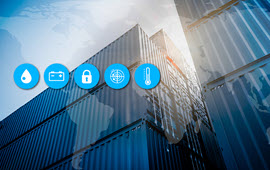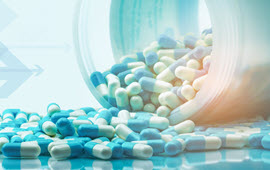5 Technologies that will change the Pharmaceutical shipping world
For several years now, pharmaceutical companies consider ocean freight their preferred mode of transportation. This is not only driven by the lower costs of ocean freight but mostly by higher security, controlled environment technology and better operational efficiencies.
With the accelerated increase of global demand for pharmaceutical products, managing the cold chain has become more vital than ever before. Transporting temperature-sensitive, high-value pharmaceuticals in refrigerated containers substantially increases the complexity of cold-chain management since it requires strictly controlled temperature and humidity environments.
Shipment monitoring technologies are varied, ranging from plain temperature recorders and sensors to monitor operating parameters, through radio-frequency identification (RFID) and mobile communications to track goods, to GPS-based devices that pinpoint the exact location of cargo at all times. In addition to location tracking, technology today offers the means to ensure cargo security, suitable temperatures, and continuous monitoring door to door.
What are the indicators that pharmaceutical companies must monitor during transportation of their high-value cargo? Here are a few:
- Power on/off – obtaining alert notifications if a reefer is disconnected for more than a specific period of time
- Supply and return temperatures, including thresholds, and humidity
- Immediate alert in case of unauthorized door opening (door sensor)
- Route deviations (changes in setpoint temperature) and full tracing
- Real-time data collection and monitoring
- Comprehensive end-of-voyage reports in compliance with government regulations (FDA, IRS and custom)
- Compliance with Good Distribution Practice (GDP)
While moving from port to port, on a vessel, inside the warehouse or at the dock, using the tight technology companies can now keep an eye on their valuable cargo every leg of the journey:
- Real-time data collection and monitoring and comprehensive end-of-voyage reports in compliance with government regulations (FDA, IRS, and custom)
- SLAs based on response times and type of alert
- Optimum containerized cargo security and improved container utilization
- Compliance with Good Distribution Practice (GDP)
Today’s smart technologies can monitor each and every one of these indicators anywhere in the cold chain – on the road, in a vessel in the ocean, inside the warehouse and/or at the dock. This ensures that expensive cargo is not damaged or ruined during long-distance transportation and that it reaches safely its destination to save lives.


